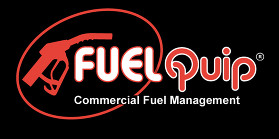Learn More About The Different Types Of Fuel Dispensers
There are a number of important safety precautions that fuel suppliers must take when storing, dispensing and otherwise handling these flammable and potentially combustible materials. Foremost among these is making sure that the right containment and disbursement units are being used. Following are several important things to know about the different types of fuel dispensers before choosing and paying for this equipment.
To begin, it is important to understand exactly what this equipment is and its function in the storage or other environment. These are units that you typically see at filling stations that disburse ethanol fuel, LPG, diesel, pump petrol, or various options in biodiesel. A pumping system can even be used for the distribution of kerosene. In addition to being used at filling stations for vehicles, this type of machinery can be found at other locations as well, such as ranches and farms, or airports.
Metals are largely used for the construction of pumping stations. The two most common metal types in these applications are stainless steel and aluminum. All dust caps, nozzles, and movable hosing are often made from combinations of rubber or plastic. The flexible plastic hosing is what connects nozzles to pumps.
A nozzle is placed directly into the inlet for fuel in each vehicle. This way, drivers or pumping technicians can distributed as much fuel as is necessary for filling the tank. Despite being comprised of rubber and plastic, the hoses that are used in these applications must be able to withstand a considerable amount of wear and tear due to near constant exposure to the outside elements. As such, the materials use for these purposes are generally very high in quality.
There are also a number of inherent dangers that these units are subjected to due to their locations. For instance, the drivers that use them may forget to hang them properly and can then run right over them. In addition to investing in quality materials for assured value, choosing hoses that are comprised of durable rubbers or plastics is vital for preventing leakage, spillage, and other issues that might ultimately create a safety hazard.
Several important considerations need to be made when buying dispensers for specific locations. Among some of these are conditions such as the rate at which fuel will be flowing. Companies have to think about the size of inlets, the weight of all components included in these setups, and maximum working pressures among many other things.
In this way, there are dispensers that vary in their ability to meet specific environmental and usage requirements. There are also single nozzle and multi-nozzle applications. Companies can choose from submersible and suction type units as well as those that offer a standard, steady flow rate and options that offer heavy-duty or expedited flow rates.
With more advanced setups, companies might want to use systems that can be remotely operated. These tend to be more costly than standard, basic designs, but they also provide a greater level of overall safety, particularly in instances in which emergency shut-off solutions are needed. To know more about the exact specifications required for your location or intended application, however, it is generally best to work with either a knowledgeable, supplier representative, or a reputable, compliance consultant.


